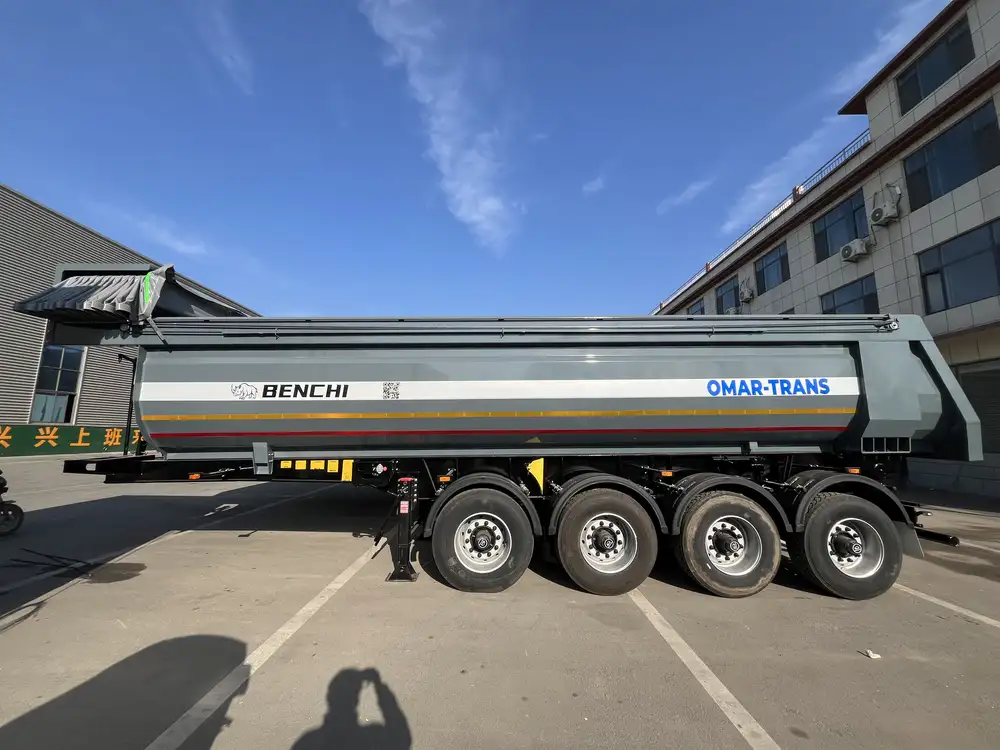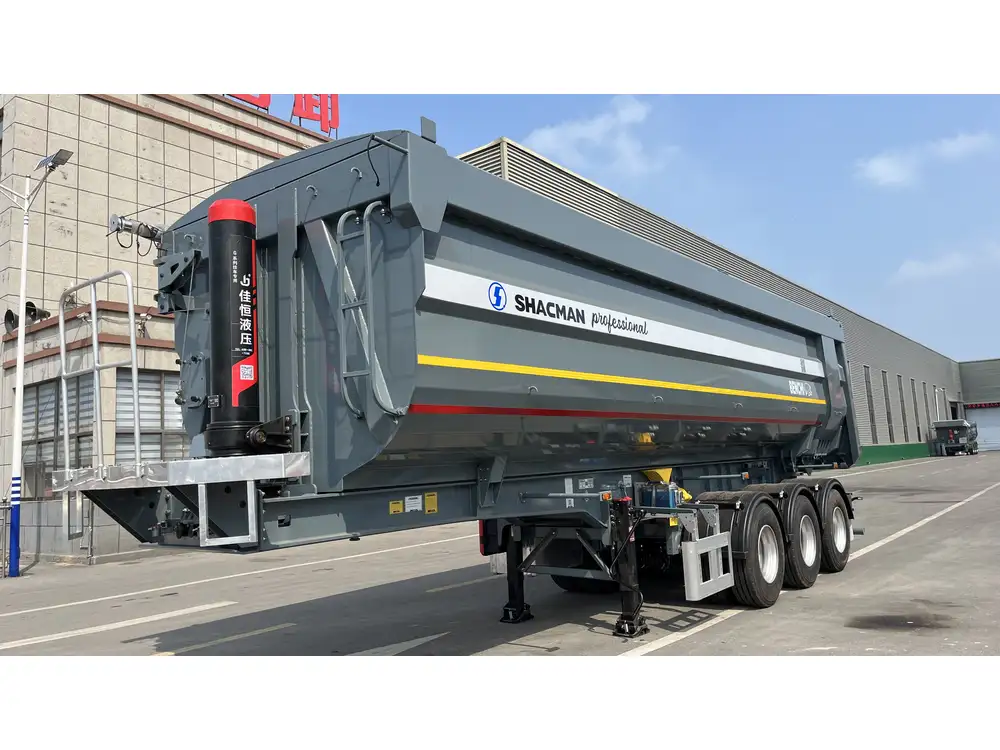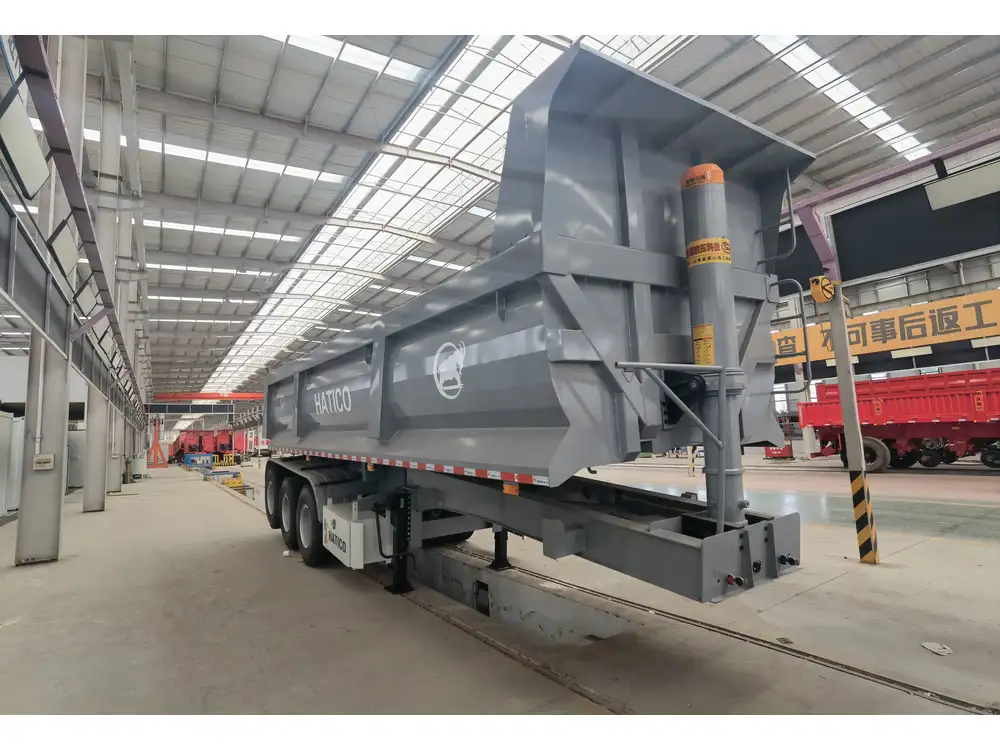When navigating the world of transportation and logistics, one often encounters several terms that may be confusing at first glance. Among these, “the front of a semi-trailer” is a particular area of interest that deserves thorough exploration. In this article, we delve deeply into the terminology, structure, and functionality of semi-trailers while ensuring that readers gain a comprehensive understanding of what this critical component entails.
The Basics: Understanding Semi-Trailers
Semi-trailers are an essential component of the trucking industry, enabling the efficient transport of goods across vast distances. Unlike full trailers, semi-trailers are designed to be towed by a tractor unit, which carries a significant portion of their weight. This unique design allows semi-trailers to have a structure that includes a front section, often referred to as the “nose” or “front end.”
Key Components of a Semi-Trailer
- Chassis: The structural frame upon which the trailer is built.
- Kingpin: A pivotal metal pin that serves as a coupler connecting the tractor to the semi-trailer.
- Axles: These are key elements that support the weight of the trailer and allow it to roll.
- Suspension System: Responsible for absorbing shocks from the road, ensuring stability while in transit.
- Landing Gear: Located at the front of the semi-trailer, this adjustable support structure stabilizes the trailer when it is uncoupled from the tractor unit.

The Front of the Semi-Trailer: Terminology and Function
As we focus our attention on the front of a semi-trailer, it is crucial to address its various components and their functional significance:
The Nose of the Semi-Trailer
- Definition: The nose of a semi-trailer generally refers to the forward-facing part that connects to the tractor’s coupling mechanism (the fifth wheel).
- Shape and Design: The nose is often tapered to improve aerodynamics, minimizing drag and enhancing fuel efficiency. Some manufacturers develop aerodynamic skirts and designs to further enhance this aspect.
- Impact on Driving: An aerodynamic front can significantly influence the handling and maneuverability of the truck, particularly at higher speeds, by reducing wind resistance.
The Front Wall: A Critical Structural Component
- Purpose: The front wall, often referred to as the front bulkhead, provides stability to the trailer structure and protects the cargo. It acts as a barrier, preventing items from shifting forward during transit.
- Materials Used: Typically constructed from reinforced materials, such as steel or composite panels, the front wall must withstand considerable pressure and impact.

The Kingpin: The Connection Point
- Functionality: The kingpin, located at the lower front section of the semi-trailer, is the key connection between the trailer and the tractor. It plays a significant role in allowing the tractor to steer while pulling the semi-trailer.
- Safety Features: It is equipped with safety locks and mechanisms to ensure that it remains securely engaged during transit.
Exploring Different Types of Semi-Trailers
Understanding the front of a semi-trailer also involves exploring the variety of semi-trailer types. Each type has a specific front design to address the unique needs of different cargo types.
1. Flatbed Trailers
- Design: These trailers have a completely open top and no front wall, allowing for easy loading and unloading of large items.
- Functionality: The front design consists of stanchions or bulkheads to secure cargo and contain items.

2. Closed or Dry Van Trailers
- Design: These enclosed trailers have a front wall that serves as a barrier against the elements.
- Functionality: The aerodynamic nose design is crucial for improving fuel efficiency.
3. Refrigerated Trailers
- Design: Similar to closed trailers but with additional insulation and a cooling apparatus.
- Functionality: The front includes a specialized area for refrigeration mechanisms while still maintaining aerodynamics.
4. Tank Trailers
- Design: These are designed to carry liquids and have a specialized, rounded front to accommodate the tank structure.
- Functionality: The sleek front shape facilitates movement of liquids without generating excess turbulence.

Common Misconceptions Regarding the Front of Semi-Trailers
There are several misconceptions surrounding the terminology and functionality associated with semi-trailers, particularly concerning the front section.
Misconception 1: All Semi-Trailers Have the Same Front Design
While most semi-trailers will have a front bulkhead, the design varies significantly based on the intended use of the trailer. As noted in the previous section, flatbeds, dry vans, and tankers all feature unique designs tailored to their specific needs.
Misconception 2: The Nose Doesn’t Impact Performance
Many underestimate the aerodynamic influence of the nose on performance. A poorly designed front can cause substantial increases in fuel consumption, especially at highway speeds. Manufacturers increasingly focus on optimizing this aspect for improved efficiency.

Challenges and Considerations
Safety and Stability Concerns
The front end of a semi-trailer is critical for ensuring safe transport. Factors such as load positioning, kingpin integrity, and structural wear can significantly impact overall safety. Regular inspections are essential to identify any potential issues before they escalate into serious problems.
Regulatory Compliance
The semi-trailer front must adhere to regulatory standards governing height, width, and weight. Understanding these regulations is crucial for avoiding penalties and ensuring safety on the road.

Advantages of an Efficient Semi-Trailer Front Design
Investing in a well-designed front structure offers numerous benefits, including:
1. Improved Fuel Efficiency
- Aerodynamics: Streamlined designs contribute to reduced drag and improved fuel economy.
2. Enhanced Cargo Safety
- Structural Integrity: A robust front bulkhead ensures that cargo remains stable and secure during transit.

3. Increased Longevity
- Durability: A well-constructed semi-trailer front can resist wear and tear, resulting in lower maintenance costs and extended lifespan.
Frequently Asked Questions
What is the primary function of the front of a semi-trailer?
The front of a semi-trailer, including its bulkhead, serves to connect the trailer to the tractor and provides structural integrity and cargo protection.
How can the front design of a semi-trailer affect fuel efficiency?
Aerodynamic designs minimize wind resistance, reducing drag and improving fuel consumption, especially at high speeds.
What materials are commonly used for the front bulkhead of semi-trailers?
Front bulkheads are typically constructed from high-strength materials such as steel and aluminum to ensure safety and structural strength.
Conclusion
The front of a semi-trailer, often overlooked, plays a pivotal role in the performance, efficiency, and safety of transport operations. Understanding its terminology, structure, and functionality enables operators and manufacturers alike to make informed choices for optimizing their logistic strategies. In an industry where every detail matters, the front of a semi-trailer epitomizes the intersection of design, functionality, and performance, ultimately driving the success of transportation endeavors.



